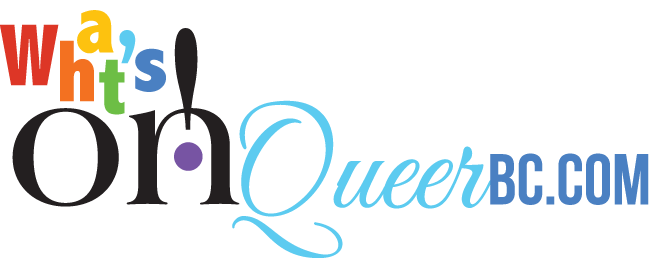What changes should be implemented in education to improve equality?
Education is a basic right for everyone. As a result, stakeholders in the education sector need to collaborate to eliminate barriers that could hinder access to quality education based on demographic characteristics. We can’t emphasize enough that equality in education will propel economic development besides being a basic human right or social justice. Again, equality in education forms a strong foundation for a more equitable society.
Sometimes, inequality in education arises from the complexity of subjects or teaching methodologies. Working with a reputable essay writing service should be encouraged to allow learners struggling with specific subjects to navigate through with ease. The numerous online resources should serve to bridge the gaps. Before we explore effective approaches that could improve equality in education, let's begin by querying what are its causes.
Causes of inequality in education
Poverty: Poverty is one of the leading causes of inequality in education. For children from poor backgrounds, education comes secondary. Such families focus on other issues such as working to sustain themselves. As a result, parents or guardians opt to tag along their children in some form of employment to add to their income. Besides, students from poor communities fail to access quality education compared to their counterparts from wealthy families.
Gender: You would be surprised to learn that even today gender plays a role in education inequality. In numerous communities, boys are given priority in education than girls. Discrimination based on gender is common across different communities where you find girls have low education opportunities due to numerous barriers.
Background: You will find that children from families with educated parents or guardians value education and therefore, prioritize it. This isn’t the case for learners from families with low education uptake. Children from such backgrounds often lack the parental support or resources necessary to compete with their colleagues. It significantly impacts their education outcome and mentoring others becomes almost impossible.
Jurisdiction: Another significant cause of inequality in education is the geographic location. In some areas, there are limited educational institutions that offer quality education. Besides, some institutions in such areas have significant challenges that include few teachers, poor infrastructure, and low-quality resources.
Funding disparities: Another contributor to inequality in education is the differences in funding. Schools from wealthy communities access huge funding compared to others in different regions. The huge amounts ensure that the schools have top-quality resources while those from poor communities grapple with outdated or limited facilities to serve their overcrowded population.
5 strategies that will improve equality in education
1. Address funding disparities: One of the changes that should be actualized is adjusting the current funding approach to a more equitable one. Resources should be allocated to schools based on needs. Such an approach will ensure that schools in poor communities will get funding that matches their population and students' needs.
2. Ensure uniformity in early childhood education: One of the ways that stakeholders in the education sector could improve access to quality education is by offering a uniform early childhood education. Doing so will allow learners to develop a strong interest in education. In most cases, learners would lose interest due to the poor foundation they get in early childhood education. Educators and policymakers should ensure that early childhood education is given undivided education for positive outcomes.
3. Create awareness of discrimination in education: Another important step that stakeholders should creating awareness and shunning discrimination in education. Educators should remain vigilant through policies, teaching approaches, and interactions with students from diverse backgrounds. Experts from customwritings explain that diversity in the teaching staff would be necessary to achieve this.
4. Create a conducive learning environment: Learners have different needs and it calls for learning institutions to create learning environments that fit such needs. For instance, educators should consider learners with learning disabilities and create an environment where they feel safe and appreciated. Additionally, learning institutions should consider learners from poor backgrounds who have unique challenges that could hinder their positive education outcomes.
5. Foster more collaboration between schools and parents: Another effective approach that could enhance positive outcomes in education is harnessing positive educational outcomes. Including parents in their children's education journey is vital since it allows them to provide the required support while promoting a positive attitude towards education. Such an endeavor will help parents who are uneducated to appreciate and prioritize their children’s education.
5 strategies that educators should implement to improve equality in the classroom
1. Work on your beliefs: As an educator, one of the most notable tips to enhance equality in the classroom is working on your belief system. As customwritings LinkedIn experts explain, teachers may be unaware of biases that exist in their classes. Conducting a critical self-assessment will reveal such biases which will positively promote equality in the classroom.
2. Make sure your classroom is conducive for all: One of the main responsibilities of trainers is to ensure they create a supportive and conducive learning environment for all learners. Ensure you make it known to all students that your class must be inclusive and each learner should be accorded equal opportunity and maximum respect. You should be candid on class rules.
3. Work on your teaching styles: Another important thing that you should do is to ensure that your teaching styles work with diverse students. Learners have different learning styles which you should incorporate in your teaching. Understand the unique needs of each learner to ensure they get the maximum from your class.
4. Use technology in the right way: Today, teachers are embracing technology to enhance the efficiency of their teaching while improving learners' experience. But, do you use it the right way? In one customwritings Facebook post, teachers should consider learners with different disabilities as they ingrain technology in their teaching. Consider those students who might need assistive technology.
5. Pay attention to cultural diversity: It is important to understand the beliefs and norms of different backgrounds. For example, it is important to understand the important cultural or religious days so as not to assign students assignments or assessments.
So, is it easy to achieve equality in education?
Yes! Equality in education is achievable when stakeholders remain committed to the same. Implementing the above strategies will go a long way in promoting diversity.
The first step to identifying effective strategies is by understanding the causes. Addressing the causes is the surest way that guarantee you equitable education.
Educators should also ensure equality in the classroom. They should embrace different approaches in managing their classes as well as their teaching methodologies. Implementing these strategies will ensure that learners with different needs are catered to and perform at their best.
Equality in education has numerous benefits and stakeholders should prioritize it.









